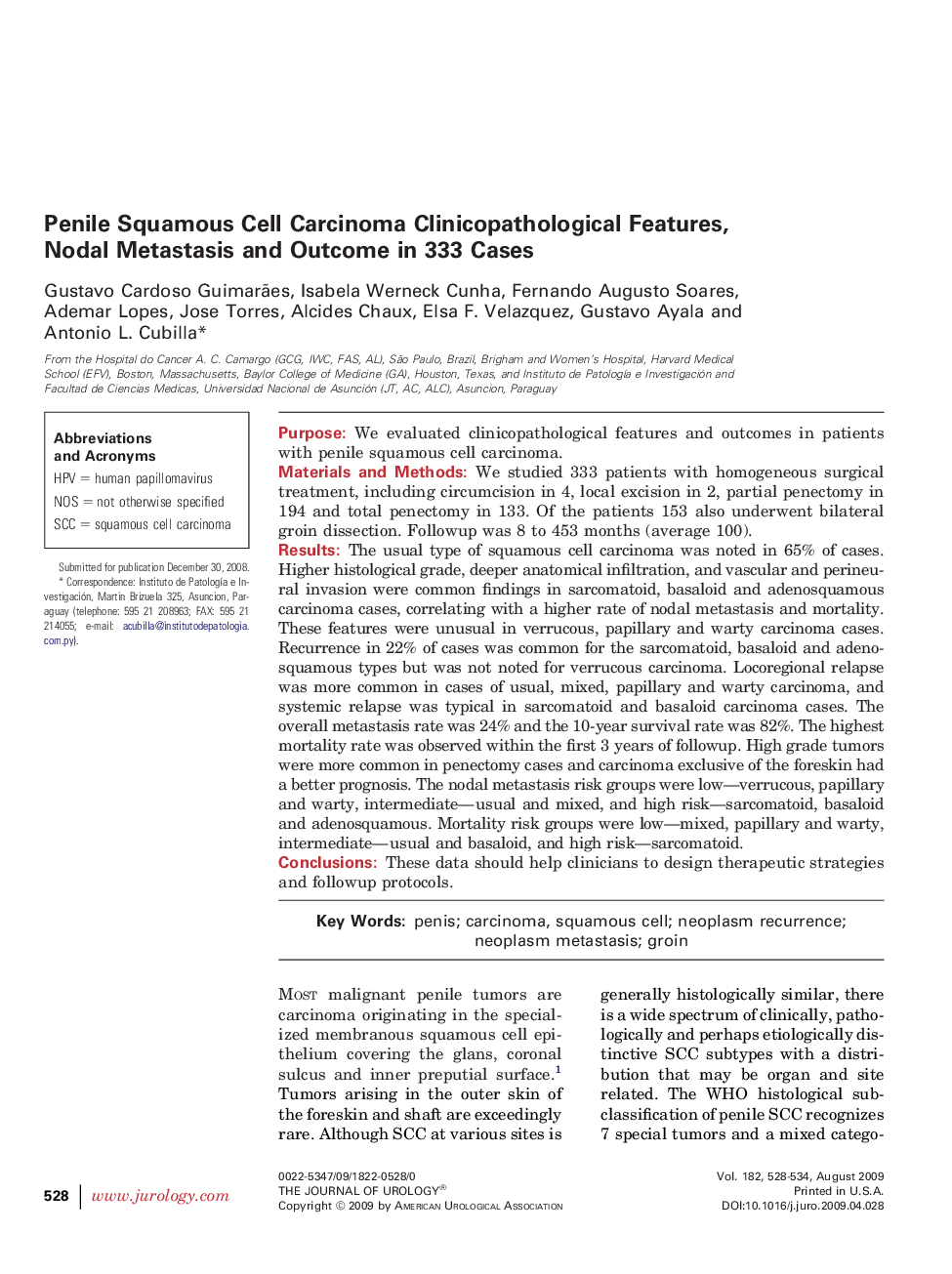| کد مقاله | کد نشریه | سال انتشار | مقاله انگلیسی | نسخه تمام متن |
|---|---|---|---|---|
| 3874220 | 1598976 | 2009 | 7 صفحه PDF | دانلود رایگان |

PurposeWe evaluated clinicopathological features and outcomes in patients with penile squamous cell carcinoma.Materials and MethodsWe studied 333 patients with homogeneous surgical treatment, including circumcision in 4, local excision in 2, partial penectomy in 194 and total penectomy in 133. Of the patients 153 also underwent bilateral groin dissection. Followup was 8 to 453 months (average 100).ResultsThe usual type of squamous cell carcinoma was noted in 65% of cases. Higher histological grade, deeper anatomical infiltration, and vascular and perineural invasion were common findings in sarcomatoid, basaloid and adenosquamous carcinoma cases, correlating with a higher rate of nodal metastasis and mortality. These features were unusual in verrucous, papillary and warty carcinoma cases. Recurrence in 22% of cases was common for the sarcomatoid, basaloid and adenosquamous types but was not noted for verrucous carcinoma. Locoregional relapse was more common in cases of usual, mixed, papillary and warty carcinoma, and systemic relapse was typical in sarcomatoid and basaloid carcinoma cases. The overall metastasis rate was 24% and the 10-year survival rate was 82%. The highest mortality rate was observed within the first 3 years of followup. High grade tumors were more common in penectomy cases and carcinoma exclusive of the foreskin had a better prognosis. The nodal metastasis risk groups were low—verrucous, papillary and warty, intermediate—usual and mixed, and high risk—sarcomatoid, basaloid and adenosquamous. Mortality risk groups were low—mixed, papillary and warty, intermediate—usual and basaloid, and high risk—sarcomatoid.ConclusionsThese data should help clinicians to design therapeutic strategies and followup protocols.
Journal: The Journal of Urology - Volume 182, Issue 2, August 2009, Pages 528–534